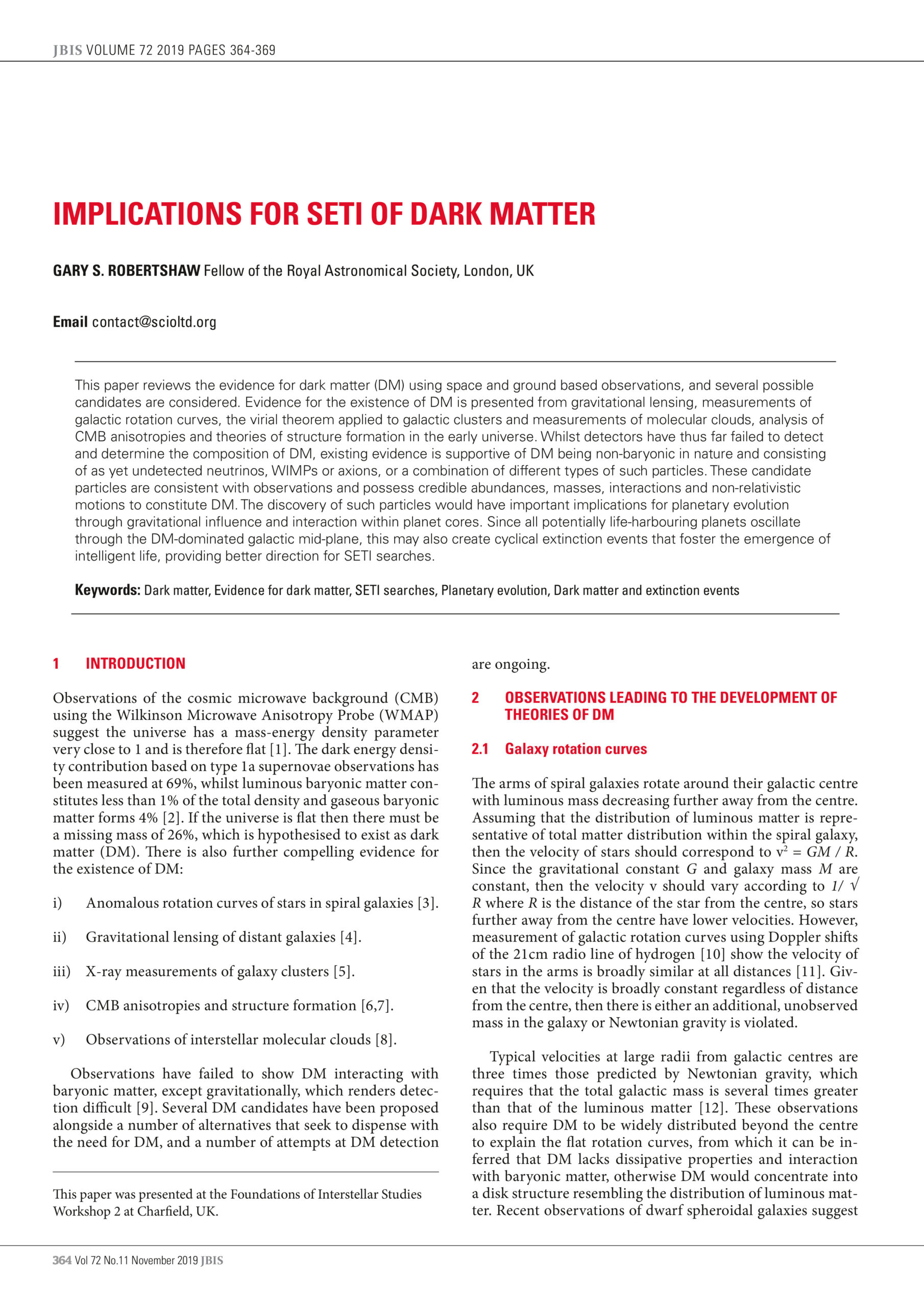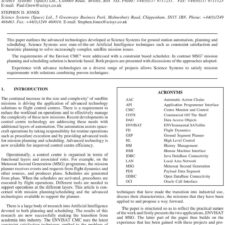Implications for SETI of Dark Matter
£5.00
G. S. Robertshaw (2019), JBIS, 72, pp.364-369
Refcode: 2019.72.364
Abstract:
This paper reviews the evidence for dark matter (DM) using space and ground based observations, and several possible candidates are considered. Evidence for the existence of DM is presented from gravitational lensing, measurements of galactic rotation curves, the virial theorem applied to galactic clusters and measurements of molecular clouds, analysis of CMB anisotropies and theories of structure formation in the early universe. Whilst detectors have thus far failed to detect and determine the composition of DM, existing evidence is supportive of DM being non-baryonic in nature and consisting of as yet undetected neutrinos, WIMPs or axions, or a combination of different types of such particles. These candidate particles are consistent with observations and possess credible abundances, masses, interactions and non-relativistic motions to constitute DM. The discovery of such particles would have important implications for planetary evolution through gravitational influence and interaction within planet cores. Since all potentially life-harbouring planets oscillate through the DM-dominated galactic mid-plane, this may also create cyclical extinction events that foster the emergence of intelligent life, providing better direction for SETI searches.





